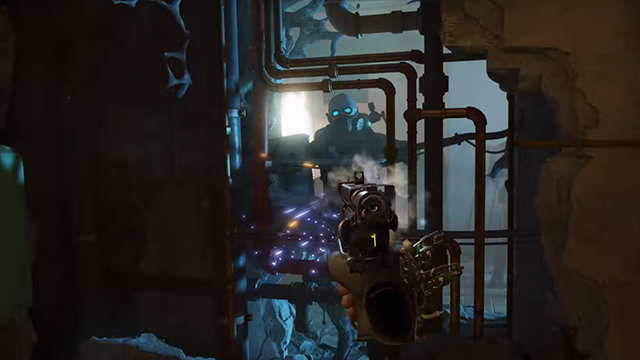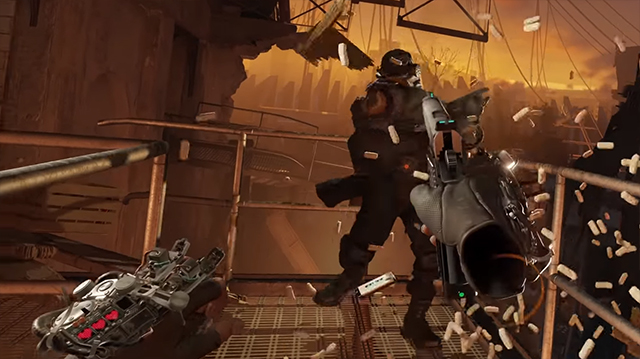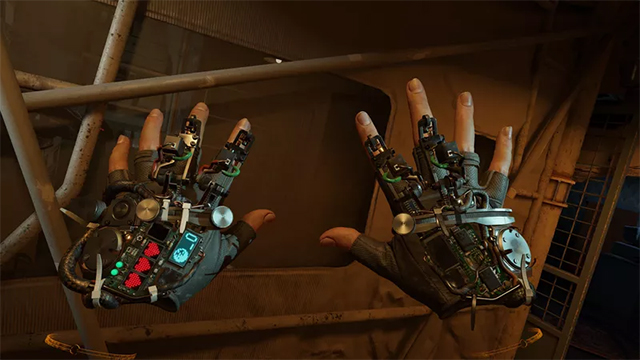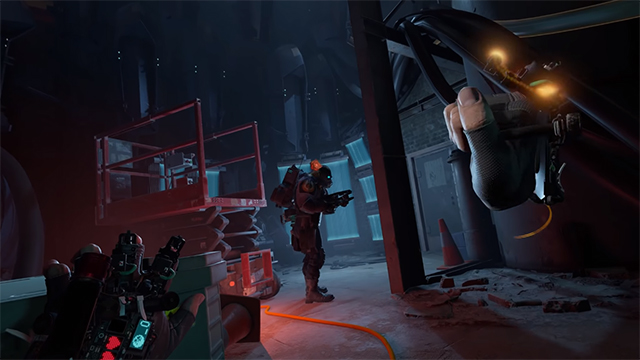Half-Life has been stagnant since 2007 as the second episode of Half-Life 2 is still dangling, unfinished. It was a classic, as was the entry that preceded it, which has made the wait for Half-Life 3 all the more tantalizing. But the recently announced Half-Life: Alyx isn’t Half-Life 3 in any way, shape, and form. This spin-off is especially different in form since it is exclusive to VR much to the chagrin of many without the space, will, or money to pony up for a fancy headset. Valve made a conscious choice to go down this path and while some will be left out, this is probably the best creative choice for the game and VR medium.
The original Half-Life revolutionized first-person shooters. Doom, Wolfenstein 3D, and Duke Nukem were shooters mostly concerned with, well, shooting. Story was an afterthought and only played out in the manual or in tertiary bits of lore. Half-Life expanded upon that, implemented a real story into a genre normally built around killing demons, Nazis, or aliens without any second thought.
ALSO: Half-Life VR game may have been leaked in The Lab
It was a landmark moment for shooters and the second game also picked up that torch and further pushed the envelope. Not only was the follow-up an incredible tale that expanded upon the original’s storytelling, but it also changed how physics were implemented in gaming. Shooters were still trying to ape its narrative style but its Gravity Gun had a rippling effect that touched games from Psi-Ops: The Mindgate Conspiracy to 2019’s Game of the Year contender, Control.
After two installments, Valve had shown how immersive stories could be told in first-person shooters as well as how real-world physics can benefit a game world could feel more alive. Of course, these elements were stacked on top of Valve’s signature attention to detail and polish, but these were the two big takeaways that forever shaped the genre and gaming at large.
A new way to innovate

Following up those two classic acts — especially all these years later — is a tall task, even for an acclaimed developer like Valve. Aside from the dump trucks of money flowing in from Steam that have probably helped push the developer away from, well, development, it’s likely why the team hasn’t touched Half-Life since. If a series becomes known for pushing the envelope, it almost has to push the envelope with each release.
Valve’s Robin Walker even said as much, stating the prospect of Half-Life 3 was “terrifyingly daunting.” Without that storied moniker attached, he said it allowed the team to focus on what people enjoyed rather than worry about the mechanics of a Half-Life 3 and the baggage that would come with that title. He even said VR was this game’s Gravity Gun, meaning it was a central pillar that’s meant to guide the whole experience.
Virtual reality gives Valve the opportunity to play in a whole new space and innovate in an area that isn’t as well worn, especially since it is a guiding principle for the game. First-person shooters from BioShock and Resistance 3 to Metro and, ironically, the new Wolfenstein games have expanded on what Half-Life did, meaning that it would be harder for a traditional Half-Life game to feel as fresh with a few others crowding the genre. VR is relatively new and more open to having an experience as groundbreaking as those original two titles, even if that is a tall task.
Half-Life: Alyx addresses the chicken-and-egg VR situation

Valve is even uniquely qualified to push forward VR as a whole. Investing in VR games is prohibitively expensive and why we don’t see big AAA VR releases. Most of the VR highlights are small indie titles like Beat Saber, Superhot VR, and Pistol Whip. Big developers like Insomniac or Bethesda may put out VR games, but they pale in scope when compared to the premier releases from those same studios.
But Valve is different. Since the company is so heavily involved with VR with its Index and Vive headsets and is a legendary development studio, it makes sense that Valve would want to take more risks and be the developer to create one of the biggest VR experiences. Valve, unlike almost every other VR developer, directly benefits from making a killer app on the hardware end where other teams are almost exclusively tied to the software sales. Walker even stated the same thing by saying Valve was “in a unique position to fill the role of a big AAA VR game,” so the logic isn’t lost on them either.
Valve Indexes owners will even get a copy of Alyx (with exclusive features), directly encouraging others to get the headset or at least feel good for already having one. If people are hesitant to buy VR games because there are no big games and studios are similarly hesitant to invest in big games because VR’s small audience, Valve is trying to address that persistent chicken-and-egg situation with the full-fledged game that is Half-Life: Alyx.
A spin-off gives Valve more room to experiment

But Valve isn’t directly addressing Half-Life 3, which is what this game isn’t. Making it a prequel spin-off allows the team to take more risks and create something that has more potential to be its own thing, rather than a hotly anticipated sequel with years of anticipation stacked on top of it. Being in the same universe but not being a numbered successor allows the team to springboard off what people know and love without making it an essential piece of the overall puzzle.
The inessential nature of spin-offs and prequels opens up Alyx to be more of an experiment and that’s why it works as a VR title. It would have been a little anticlimactic for Valve to return to Half-Life after all these years with prequel but doing that in virtual reality is more noteworthy. It’ll afford Valve more creative freedom to experiment, which is what Alyx‘s VR-only nature is emblematic of. Even its mere concept is an experiment and that experimentation stems from Half-Life‘s aforementioned bond with innovation. And any enhancements could benefit the eventual Half-Life 3, too, if this is some sort of precursor to Valve making more Half-Life. While fans would likely want to play most games in a series they enjoy regardless of it is a side story or not and this VR exclusivity will leave some of those fans out, this was one of the best paths to take, especially since Valve’s David Speyrer said that making a Portal VR game would likely involve a lot of barfing.
And while we have yet to see if Half-Life: Alyx involves a lot of barfing, Valve was wise and bold to make it a VR-only game. The developer’s status in the industry and deep involvement with some of the VR headsets give this game the chance to a big VR experience like none before it. If people criticize consoles for holding back the potential of PCs, then the same logic can be applied that flat TVs can hold back the potential of what a VR game could do when unshackled from traditional input methods. The medium could use the boost and Valve is a prime candidate to do the boosting. Leaving out people who will abstain from VR is an unfortunate side effect that probably made the choice hard to make, but given how Alyx could push virtual reality forward in an unprecedented way, it’s got a good chance of making that sacrifice worth it.











